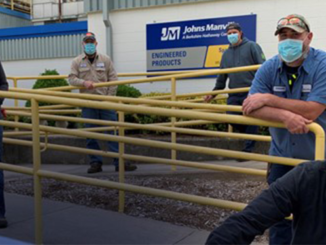
By / Ron Coleman
What levels of cybersecurity does your business have in place?
Many of us have a love/hate relationship with technology. The phone isn’t simply a telephone anymore. It is a powerful communication tool in both our personal and business worlds. We know that technology is getting more powerful and that we need to stay on top of it for us to run our businesses effectively.
The federal government also recognizes how important ditigal technology is for small and medium-size businesses and has introduced the Canada Digital Adoption Program (CDAP). It is set to provide $4 billion over four years with $1.4 billion in grants and $2.6 billion in loans from the Business Development Bank of Canada (BDC). The funding will help small and medium-size enterprises leverage e-commerce opportunities, upgrade or adopt digital technologies, and digitize their operations.
Digital Footprint
Grow Your Business Online funding provides microgrants of up to $2,400 and youth e-commerce advisors’ support to help small bsuinesses implement digital storefronts and e-commerce capabilities. The Boost Your Business Technology funding provides grants covering 90 percent of costs up to $15,000 to access advisory services to develop a digital adoption plan, access to zero percent interest loans from the BDC, as well as opportunities for student placements. To determine elegibility, there are a few basic questions that need to be answered. For either program, you must have at least one employee. To be eligible for the Boost Yor Business Technology, you must have had revenues of at least $500,000 in one of the previous three years and must complete a digital needs assessment. The applicant must be an owner or director of the business.
Locking The Back Door
Before delving into social media, let’s look at some other areas the CDAP financing can help with. Cybersecurity has become a major issue. We need to protect our critical systems and sensitive information from digital attacks. Just imagine the horror of not being able to access your computers. Your business would come to a halt and might never recover. My first recommendation is that you use some of the funding to beef up your cybersecurity.
A huge growth opportunity for businesses, that is still in its infancy but worth exploring, is augmented reality (AR). AR uses a real-world setting while virtual reality (VR) is compeltely virtual. AR users can control their presence in the real world; VR users are controlled by the system. VR requires a headset device, but AR can be accessed with a smartphone. According to Procore, there are five main areas that AR is set to impact in construction businesses over the coming years.
The first is safety trianing. Augmented reality simulates tools, equipment, and other safety scenarios to give trainees a safe learning environment where nobody gets hurt. Thus, they can safely learn from their mistakes. The programs are richly detailed so that the new skills carry over to the real world. The cost is significantly lower than the current methods.
Next is real-time project information. Thanks to AR, field workers can walk a job site at any time and see how the finished project will look. The technology helps an empty shell of a building floor come to life with location, style and size of windows and doors, pipes, and HVAC systems. Using an AR headset, the worker sees these details as if they were right in front of them. They can compare what they see to the building plan to ensure everything is in order. This can significantly cut time spent correcting minor mistakes, like wrong outlet covers, as well as major errors, such as incorrect positioning of a door or window.
Thirdly is team collaboration. Augmented reality allows remote workers to inspect the job site as if they were there in person. It enables real-time collaboration to solve problems and fix errors without having to wait for a particular contractor or decision-maker to be physically present. AR also allows workers to take photos or videos of issues, and remote teams can view and comment on them.
Virtual Walkthroughs
New technology will allow for more easily streamlined project planning. AR lets owners, engineers, and other lead people take virtual walkthroughs of buildings in progress or see how changes will be incorporated into the design without throwing the job off track. Being able to visualize changes’ effect on a project in real time can help find mistakes early and guarantee every project prinicpal is on the same page.
Lastly, is modifying projects. Using an AR headset with a digital overlay of a project, engineers can easily change the layout of walls or other essential structural components and systems. AR gives them a view of how those systems work together. It can also show incompatibilities or instances when a potential fix will create a problem down the line. Accepted changes update in real time, so the risk of workers following outdated plans is greatly reduced. Using AR here can avoid budget-killing oversights, lowering the chances of major rework once the project is underway.
We would encourage you to get ahead of the curve by exploring these areas now. Be proactive. Check out Microsoft HoloLens to see how this is impacting our industry.
Cybersecurity and AR are two major areas that you could review to see where you might want to use the CDAP support in your business. In Part 2 of this article, we will focus on social media. Social media is critical to your success as studies have shown that 74 percent of consumers rely on social media when making purchasing decisions. CDAP makes this a great time to set up or fine tune your social media programs and deal with other key technology issues. The process requires expertise and ongoing maintenance. Part II will examine what social media platforms are available, what their key strengths and weaknesses are, and what other areas you need to explore. ▪
Ron Coleman is a Vancouver-based accountant, management consultant, author, and educator specializing in the cosntruction industry. He can be reached by email at ronald@ronaldcoleman.ca



